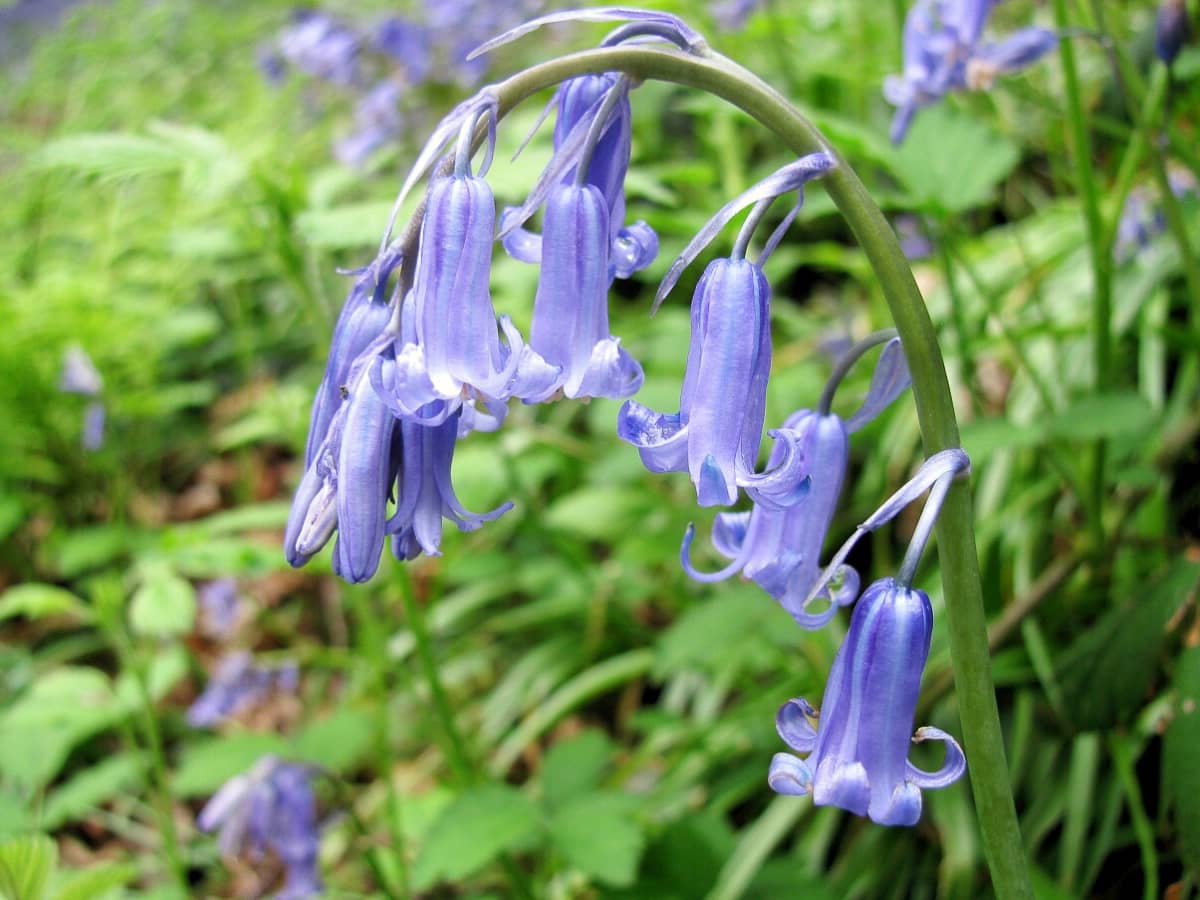
The English Bluebell is a captivating and enchanting flower that is native to the United Kingdom. With its slender stalks and delicate petals, it thrives in shaded woodlands and meadows, blanketing the landscape with its vibrant hues of blue. But beyond its aesthetic appeal, the English Bluebell holds a wealth of fascinating facts that make it even more intriguing. From its historical significance to its role in folklore and its vital role in ecosystems, there is so much to learn about this beloved flower. In this article, we will explore 18 captivating facts about the English Bluebell, shedding light on its beauty, symbolism, and the importance it holds in our natural world.
Key Takeaways:
- English Bluebells are iconic flowers native to England, symbolizing love and gratitude. They are protected by law and play a crucial role in the ecosystem as a food source for bees and butterflies.
- These vibrant blue flowers have a rich folklore and are the national flower of England. They bloom in spring, creating magical woodland displays, and have inspired art and literature for centuries.
Unique and Distinctive Appearance
The English Bluebell has slender stems that stand about 30cm tall, adorned with graceful drooping clusters of bell-shaped flowers. The petals are a distinct shade of vibrant blue, giving them their iconic charm.
Native to the Woodlands of England
English Bluebells are primarily found in the ancient woodlands of England, where they create breathtaking carpets of blue during the springtime.
Protected Under UK Law
These delicate beauties are protected under the Wildlife and Countryside Act in the United Kingdom, making it illegal to intentionally uproot them from the wild.
Fragrant and Alluring Scent
The English Bluebell exudes a sweet and captivating fragrance that attracts various pollinators, including bees and butterflies.
Symbolizes Humility and Gratitude
English Bluebells are often associated with humility and gratitude. They symbolize everlasting love and are a popular choice for wedding ceremonies and floral arrangements.
Rich Folklore and Superstitions
In folklore, it is believed that wearing a wreath made of English Bluebells will grant you the ability to speak with and understand fairies. However, it is also said to bring bad luck if brought indoors.
National Flower of England
The English Bluebell holds the esteemed title of being the national flower of England, representing the beauty and charm of the British countryside.
Preferred Habitat
These delightful flowers thrive in damp and shady conditions, often found in woodlands, meadows, and along hedgerows.
Endangered Species
English Bluebells face significant threats from habitat loss and hybridization with non-native Spanish Bluebells. Efforts are being made to conserve and protect their pure genetic identity.
Can Indicate Ancient Woodland
The presence of English Bluebells in an area can indicate the presence of ancient woodland, as they have been growing in these areas since before the 17th century.
Medicinal and Culinary Uses
English Bluebells have been used in traditional medicine for their diuretic and anti-inflammatory properties. However, it is important to note that these plants are toxic and should not be ingested.
Attract Wildlife
The rich nectar and pollen of English Bluebells make them highly attractive to insects like bees, providing them with a crucial food source.
Magical Springtime Display
When English Bluebells bloom en masse, they create a magical carpet of blue, transforming woodland floors into breathtaking vistas.
Can Hybridize with Spanish Bluebells
If English Bluebells cross-pollinate with Spanish Bluebells, the resulting hybrid plants can have characteristics of both species.
Hardy and Versatile Plants
English Bluebells are resilient and adaptable, able to naturalize in a wide range of environments, including gardens and urban areas.
Importance to Bumblebees
Bumblebees, with their long tongues, are the primary pollinators of English Bluebells. Their role in the ecosystem is crucial for the continued survival of these flowers.
Blooming Season
English Bluebells bloom from mid to late spring, creating a stunning display of color that signifies the arrival of warmer weather.
Inspiration for Art and Literature
English Bluebells have long inspired artists, poets, and writers, who have immortalized their beauty in various forms of creative expression.
As you can see, English Bluebells are not only visually captivating but also possess a rich history and significance in our culture. Let’s continue to appreciate and protect these remarkable flowers for generations to come.
Conclusion
The English Bluebell is a truly fascinating flower that holds significance both in folklore and as a native species. Its vibrant blue color, sweet scent, and delicate bell-shaped petals make it a favorite among nature enthusiasts and gardeners alike. With its ability to thrive in woodland settings and its important role in supporting pollinators, the English Bluebell is a valuable and cherished plant.
Whether you encounter it in the wild or cultivate it in your own garden, the English Bluebell is sure to captivate your senses and inspire a deeper appreciation for the natural world.
FAQs
1. Are English Bluebells endangered?
Yes, English Bluebells are considered to be at risk. They are protected under UK law, and it is illegal to intentionally pick, uproot, or sell them without a license.
2. How do I identify an English Bluebell?
English Bluebells have narrow, bell-shaped flowers that hang down from a single stem. They are typically a vibrant blue color and have a sweet fragrance. Their leaves are long, narrow, and slightly curled.
3. Can I plant English Bluebells in my garden?
Absolutely! English Bluebells make a beautiful addition to any garden. They prefer moist, well-drained soil and partial shade. Plant them in the fall for the best results.
4. Do English Bluebells have any cultural significance?
Yes, English Bluebells hold cultural significance in the UK. They are associated with ancient folklore and are often seen as a symbol of humility and gratitude. They are also the emblem of the Woodland Trust, a prominent environmental organization.
5. Can I grow English Bluebells from seeds?
While it is possible to grow English Bluebells from seeds, they can be slow to germinate and may take several years to bloom. It is generally easier to propagate them by planting bulbs or transplanting established plants.
English bluebells are a true wonder of nature, captivating hearts with their enchanting beauty and rich history. If you enjoyed learning about these fascinating flowers, why not explore more captivating topics? Discover the secrets of temperate woodland habitats, where bluebells often thrive. Immerse yourself in the magic of spring, when nature awakens and bluebells paint the landscape. For a deeper dive into the world of bluebells, uncover surprising facts about Hyacinthoides non-scripta, the scientific name for common bluebells. Embark on a journey of discovery and let nature's wonders amaze you!
Was this page helpful?
Our commitment to delivering trustworthy and engaging content is at the heart of what we do. Each fact on our site is contributed by real users like you, bringing a wealth of diverse insights and information. To ensure the highest standards of accuracy and reliability, our dedicated editors meticulously review each submission. This process guarantees that the facts we share are not only fascinating but also credible. Trust in our commitment to quality and authenticity as you explore and learn with us.


